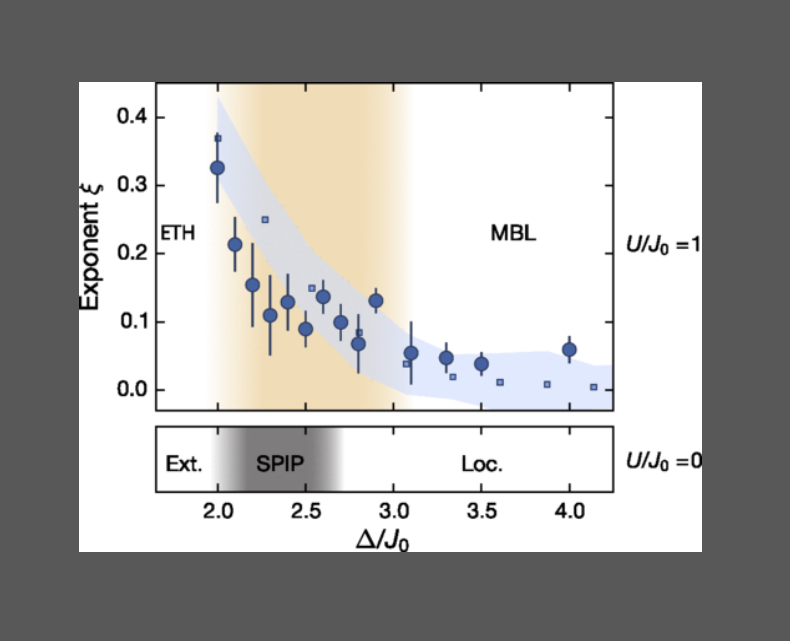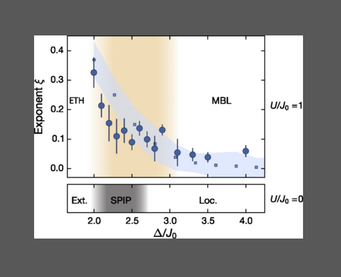Direct observation of incommensurate magnetism in Hubbard chains
Nature 565, 56–60 (2019)
Guillaume Salomon, Joannis Koepsell, Jayadev Vijayan, Timon A. Hilker, Jacopo Nespolo, Lode Pollet, Immanuel Bloch & Christian Gross

The interplay between magnetism and doping is at the origin of exotic strongly correlated electronic phases and can lead to novel forms of magnetic ordering. One example is the emergence of incommensurate spin-density waves, which have wavevectors that do not belong to the reciprocal lattice. In one dimension this effect is a hallmark of Luttinger liquid theory, which also describes the low-energy physics of the Hubbard model1. Here we use a quantum simulator that uses ultracold fermions in an optical lattice to directly observe such incommensurate spin correlations in doped and spin-imbalanced Hubbard chains using fully spin- and density-resolved quantum gas microscopy. Doping is found to induce a linear change in the spin-density wavevector, in excellent agreement with predictions from Luttinger theory. For non-zero polarization we observe a reduction in the wavevector with magnetization, as expected from the antiferromagnetic Heisenberg model in a magnetic field. We trace the microscopic-scale origin of these incommensurate correlations to holes, doublons (double occupancies) and excess spins, which act as delocalized domain walls for the antiferromagnetic order. In addition, by inducing interchain coupling we observe fundamentally different spin correlations around doublons and suppression of incommensurate magnetism at finite (low) temperature in the two-dimensional regime. Our results demonstrate how access to the full counting statistics of all local degrees of freedom can be used to study fundamental phenomena in strongly correlated many-body physics.
To view the publicaion please click here
